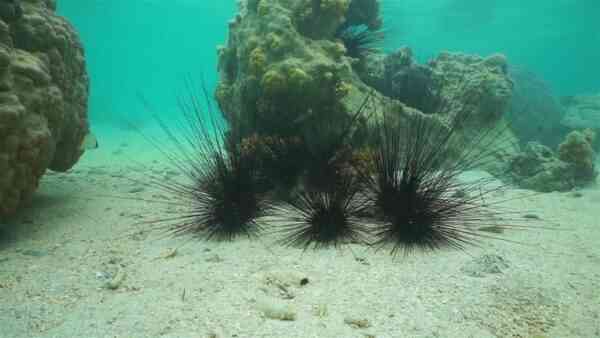Amazing creatures, sea urchins, have long tormented the minds of zoologists. These underwater animals are very interesting from a biological point of view, and the conditions in which some of their species live seem to be truly extreme. But people are willing to collect them, especially in shallow water, as sea urchins in some countries are enviable food. However, most tourists who have tried them do not share this opinion.
Interesting facts about sea urchins
- In total, there are about 940 species of them in nature.
- The size of the largest sea urchins reaches 30 cm in diameter, while in the smallest it does not exceed 2 cm.
- The first sea urchins appeared on Earth about 450 million years ago.
- Their close relatives, according to scientists, are sea cucumbers (interesting facts about sea cucumbers).
- Some types of sea urchins are poisonous and therefore very dangerous. The poison is contained in the mucus on their spines.
- If a sea urchin is stepped on, its needles, like fragile glass, break into many fragments, digging into the body. Extracting them is a very complicated and painful operation that only experienced doctors can do.
- These animals live only in highly saline waters, therefore, where large rivers partially desalinate the seas and oceans into which they flow, sea urchins do not meet.
- Needles serve them not only for protection, but also for movement, as well as for obtaining food.
- Sea urchins are not found in the Caspian and Black Seas at all (interesting facts about the animals of the Black Sea).
- The growth rings on the carapace of these animals can be used to determine their age in the same way as the growth rings of trees.
- Some species of sea urchins are real centenarians, they live up to 30-35 years.
- They are found not only in warm waters. Some sea urchins even live in Antarctic climates.
- Most of them lay eggs, but some give birth to live offspring, like mammals.
- Sea urchins can drill holes for themselves even in strong granite rocks.
- They are readily eaten by fur seals, birds, fish, lobsters and starfish (interesting facts about starfish).
- The body of a sea urchin has over 1000 tiny legs with suction cups on them.
- They grow throughout life.
- These animals are able to easily withstand the monstrous pressure of the water column. Research probes have detected them at depths of up to 7 kilometers.
- Sea urchins are completely illegible in food. They eat everything from seaweed to carrion. Some of them even eat each other.
- At low tide, sea urchins usually either hide in holes or burrow into the sand.
- The record holder for the length of needles among all sea urchins are tiara urchins (the length of the needles is up to 70 cm with a shell diameter 10 times smaller), and in flat hedgehogs their length does not exceed 2 millimeters.
- For the environment, these animals are very useful. They not only absorb carbon dioxide, but also reduce radiation levels (interesting facts about ecology).
- All but one of their species can turn over if they are knocked over.
- Sea urchin eyes located in the upper part of the body, and the mouth – in the lower. Their teeth are tiny, but very sharp.
- Diademic sea urchins glow in the dark.
- Sea otters, sea otters, eat so many sea urchins every day that their entire insides turn purple due to for the pigment contained in these echinoderms.
- Sea urchins acquire the ability to reproduce only 2-5 years after birth, depending on the species.
- Most of them are nocturnal lifestyle.
- Some small fish have learned to co-exist with sea urchins. They hide between its needles in case of danger, and in response they eat the parasites that have stuck around it, which the hedgehog cannot get rid of on its own.
